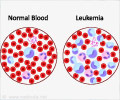
‘The triple-drug chemotherapy with topotecan helped in avoiding surgical removal of an eye or the use of external beam radiotherapy to stop disease progression and it also reduced the risk of secondary leukemia.’
Tweet it Now
Retinoblastoma is a malignant tumor that begins in the retina, the light-sensing tissue at the back of the eye. It is diagnosed in 250 to 300 children annually in the U.S.; most are less than 2 years old when the tumor is discovered."This 10-year follow-up study shows for the first time that topotecan can be used in front-line therapy to help reduce exposure of retinoblastoma patients to etoposide, which is associated with secondary leukemia," said first and corresponding author Rachel Brennan, M.D., an assistant member of the St. Jude Department of Oncology. "We expected patients to be cured, but we also found more than 80% of patients had measurable vision."
For retinoblastoma patients in the U.S. whose disease is confined to the eye, the cure rate exceeds 95%. But the widely used triple-drug chemotherapy designed to help preserve the eyes and vision of retinoblastoma patients includes etoposide, a drug that leaves survivors at risk for acute myeloid leukemia.
More than 10 years ago, the need for safer, more effective retinoblastoma therapy led Michael Dyer, Ph.D., chair of the St. Jude Department of Developmental Neurobiology, to begin the laboratory research that laid the foundation for this study.
Topotecan had shown promise in treatment of other solid tumors, including brain tumors. This encouraged the study's senior authors Carlos Rodriguez-Galindo, M.D., of St. Jude, and Matthew Wilson, M.D., of St. Jude and the University of Tennessee Health Science Center (UTHSC), to work with Dyer on preclinical testing of topotecan.
Advertisement
The study included 26 children with advanced, bilateral retinoblastoma that had not spread beyond their eyes.
Advertisement
Thermotherapy, cryotherapy and other focal therapies were used as necessary to destroy small tumors that remained in patient eyes as therapy progressed.
The triple-drug chemotherapy with topotecan was more successful than standard chemotherapy at avoiding surgical removal of an eye or the use of external beam radiotherapy to stop disease progression.
Seventy-eight percent of the 51 advanced disease eyes included in the study analysis were salvaged with treatment that included topotecan. That compares to previous reports of 30% to 60% following chemotherapy that included etoposide and often required radiotherapy. Altogether, 10 eyes in 26 patients were surgically removed, including one eye removed at diagnosis prior to chemotherapy and three removed after radiation therapy failed to stop disease progression.
"Preservation of an eye is not synonymous with preservation of vision," Brennan said. "But this therapy provided significant improvement in survival of eyes and useful vision in patients with advanced retinoblastoma."
Regular vision screening of survivors identified 18 patients with vision of 20/40 or better in at least one eye. The World Health Organization defines mild vision loss and near normal vision as corrected vision of 20/30 to 20/60 in at least one eye.
Brennan said this study showed that incorporating topotecan into front-line therapy of patients with advanced localized disease improves survival of eyes with useful vision.
Source-Medindia














